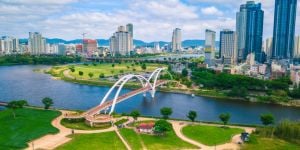Background
Coming from past exposure to communicative teaching in the states; I was highly attracted to using some of the communication strategies in the classroom overseas in Korea. This is what led me to pursue a job in teaching in an English Village in Korea. As this school had not yet been open for an entire year when I was hired, I, along with the other staff were able to bring ideas to build up a few programs and expand the materials that were there. I was able to get involved in teaching in a variety of programs such as the Regular program, Intensive English Program, and Seasonal Camps: Winter and Summer Sessions.
In this article I will be explaining one of the programs that I taught while at an English Village in Korea.
My thoughts on what they are looking for in teachers for the English villages:
Creative, flexible, respectful, hardworking. (In my personal opinion, I am attracted to this type of school because I was able to teach in a lot of different programs)
Working at an English Village, I worked more hours than at my previous job in a Hagwon (Korean term for a profit-motivated Private Academy), however, I feel that I got to interact more freely with my students and I enjoyed the variety of activities that we carried out in this immersion environment.
Program Length and Students
In the village that I taught at, the Regular Program lasts two and a half days. Some other villages have programs that last a week. The Regular Program is intended for students of public school classes. We would have about 500 students come for the 2 and a half day programs. The typical make-up of the students was elementary and middle school. Occasionally on Saturdays, or on one day programs, high school students or kindergarten students would attend the different programs.
Teachers
Teachers were represented by a range of different countries, such as, South Africa, New Zealand, Ireland, Canada, the USA and South Korea. Both native and non-native teachers were required to use only English in the classrooms.
Collaboration
Teaching improvement days, material brainstorming groups
Experience Classes
Having more than 32 experience classes, students are exposed to a variety of scenarios that they can experience while in a native English speaking country. Some activities that they carried out include attending a magic show, reading the crosswalk light at the bus station, traveling by airplane, writing a letter at the post office, navigating through a subway depot to get a ticket, getting a checkup in a hospital, and so much more.
Passports to Enter
From the time the students walked into the door of the school to the time they went home, they are introduced to a variety of scenarios and settings that they could experience in a native speaking country. One activity that all students must perform is going through immigration. They are given a passport after answering a few questions about themselves from the immigration officers. In each class, students receive blue signs and stamps in their passports for classroom participation, doing well in activities and showing respect. This passport becomes very important to the students because on the last day, students with the most of blue signs receive a small prize. Using reward systems such as passports seem to bring positive results in increasing internal motivation for the students.
Role Playing Scenarios
Students were given different roles in classes to perform tasks. Students adopted roles such as doctors, department store clerks and subway attendants. In a police station scenario for example, students became actors in their classrooms. After being taught the vocabulary of things around the classroom such as jail and handcuffs, the students became police officers, victims, criminals and witnesses. To demonstrate the experience they were told a situation then they must act it, showing a crime committed such as a robbery and then the consequences for the action was to bring all the criminals to jail, and go to the line to get their picture taken. Another role playing exercise which was performed in Subway, was going through the turnstiles, interacting with the ticket tellers to get tickets and then navigating on the subway lines to their next destination.
Some Different English Villages throughout Korea include:
1. Andong English Village
2. Seoul English Village Suyu Camp
3. Daegu English Village
4. Busan Global English Village
5. Gyeonggi English Village
We do our best to provide accurate and up to date information. However, if you have noticed any inaccuracies in this article, please let us know in the comments section below.








